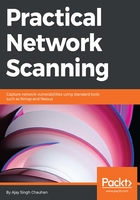
Configuration weaknesses
As a network/system administrator, we should know what configuration weaknesses are and what the corrective measures are for their computing and network devices.
User account information might be transmitted in clear text across the network, exposing usernames and passwords to an intruder. For example, if you manage your devices over Telnet, your username and password can be sniffed. The same thing is also applicable when you manage devices using GUI on HTTP.
Misconfigurations of the devices can cause significant network equipment security problems and open doors for unauthorized access. For example, misconfigured access lists, routing protocols, or SNMP community strings can open large security holes. Misconfigured encryption, lack of encryption, or low encryption ciphers for remote-access controls can also cause significant security issues.
Authentication and authorization is a major concern. If you are interested in knowing who is doing what on a piece of network equipment or system, then you might want to centralize authentication with a single authentication platform by accounting logs enabled to perform an audit regularly.
To reduce the threats to your network, the best option is to disable any unused services on all your networking devices and computing system. For instance, if you have a web server, you should disable FTP, SMTP, and other services. Another example would be if you are managing your devices with SSH, you can disable Telnet, HTTP, and FTP running on the same box.
You should only run the applications that are necessary on a device. All unnecessary applications and services should be disabled, to minimize exposure to the outside world.